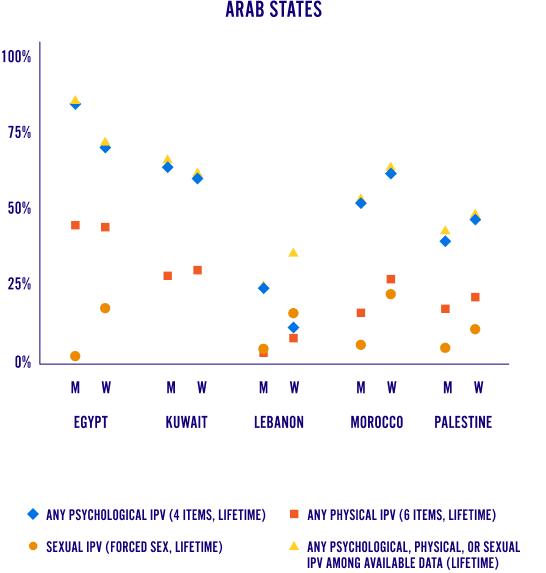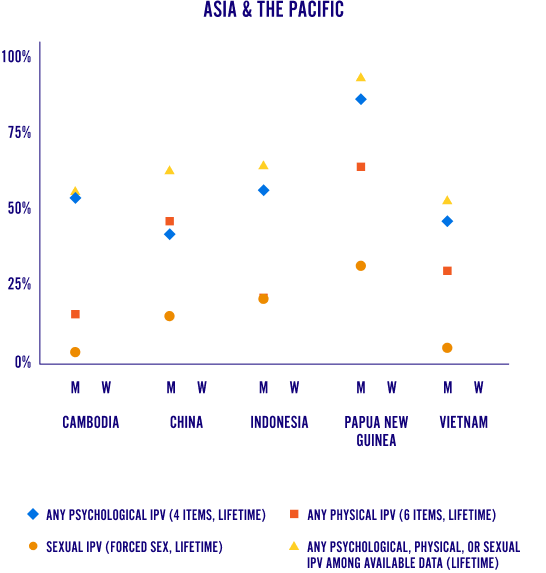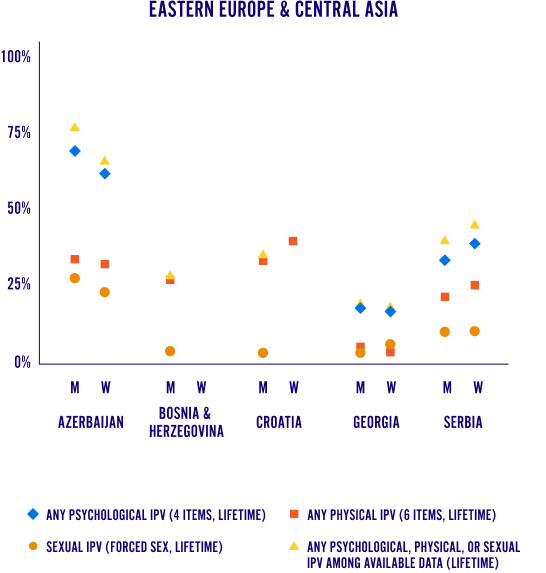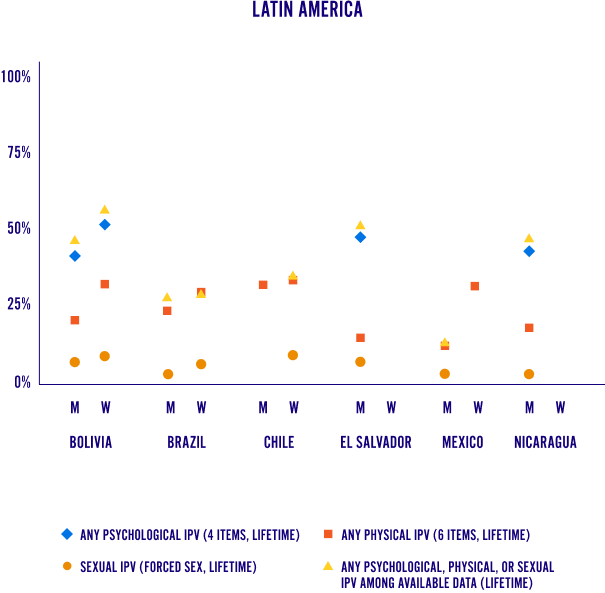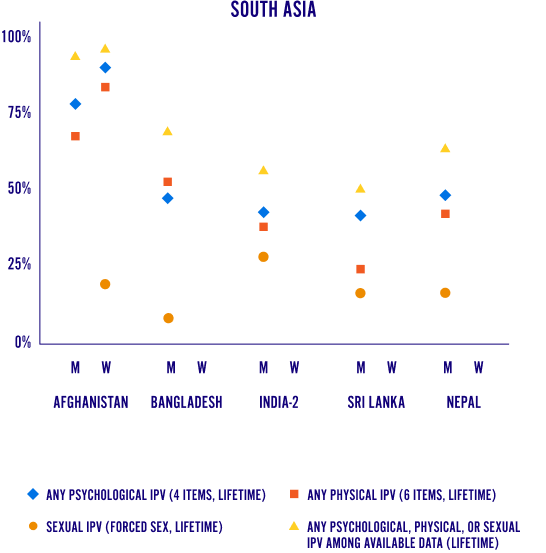Many men exert power and control over women in their lives through multiple forms of violence.
Too many men exert undue power and control over the women in their lives, including and going beyond physical forms of violence. Studies on intimate partner violence have only recently begun to ask men about their perpetration of violence, and IMAGES has sought to help fill this gap in the evidence base, with an abundance of caution and with caveats. Survey data on intimate partner violence likely underrepresent the true prevalence of violence, owing to the sensitivity, shame, and even criminal law connected to these acts. And prevalence surveys do not pick up the most serious of cases: femicide and instances in which women and girls may sustain permanent injury rendering physical or mental disability.
While overall rates of intimate partner violence differ among regions and countries, the overall picture points to the urgency of this issue. Men’s use of many forms of intimate partner violence remains extremely high around the globe, and IMAGES data provide evidence that it is possible to assess the extent of men’s use of violence by asking men themselves. Where data are available for both women and men, women generally, but not always, report having experienced higher levels of violence than men indicate they have perpetrated. The exceptions among the countries included here are Azerbaijan, Georgia, Egypt, and Kuwait. One explanation for this counterintuitive finding is that where violence is normalized and internalized, women may not even see it as violence but rather as a form of discipline they have “deserved.”
Violence leads to violence.
IMAGES male respondents were sorted by whether or not they reported witnessing intimate partner violence by their father or another male figure against their mother. Then, the reported rates of using any form of intimate partner violence themselves were calculated separately for these two groups. In nearly all participating studies, this analysis shows a statistically significant link, whereby those who witnessed violence at home were much more likely to use violence in their own adult relationships. The figure shows the statistics for all 27 locations where this statistically significant link emerged. In some locations, men who witnessed violence as children have a likelihood of using intimate partner violence fully double that of those who did not witness this violence as children. This finding adds to the deep literature demonstrating the same unfortunate pattern for women, in which having observed violence against one’s mother shows a strong link with one’s own likelihood of experiencing intimate partner violence as well. IMAGES data show that many men learn by example, normalizing as children men’s violence against women and repeating the pattern later in life themselves.
